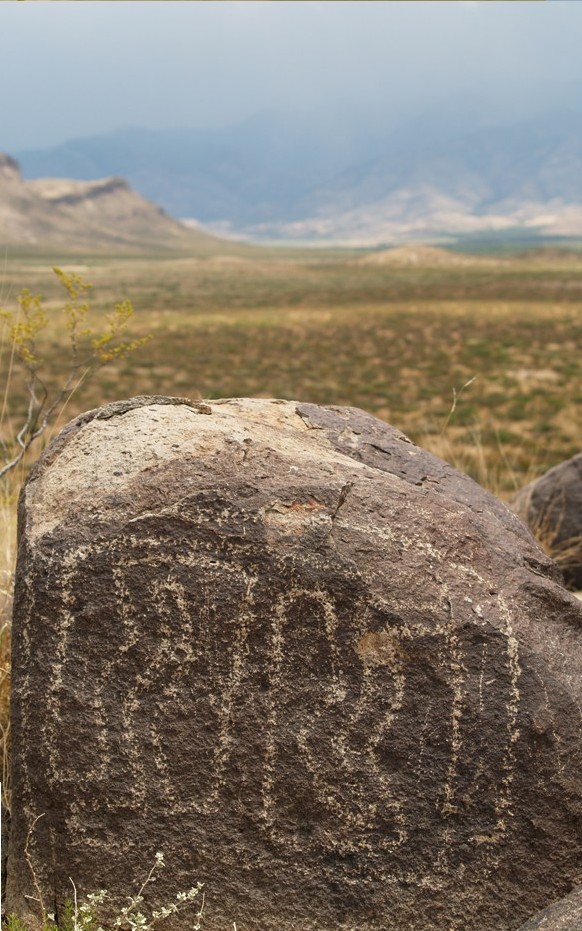El Paso area 2009 Three Rivers Petroglyph Site |
| Notice that the head is chipped on a rock with a corner and the corner bisects the face. Many of the drawings use natural features like corners or defects in the rocks to aid their drawings. |
| This is a mesquite bush. Out near El Paso, they are huge. In addition to adding flavor to what we grill, their bean pods (below) were used by the Ancient Native Americans in similar ways that we use beans today. In addition, they used the flour for bread etc. Since these plants are legumes they put very needed nitrogen back into the soil. |
| However, these plants have a nasty thorn which went right through my shoe into my foot when we went to Kilborne Hole. They don't have any poisen so it just needed to be pulled out and we continued on our way. That lens cap is 2 1/4" in diameter so that thorn is 1.25" long! |
| There are thousands of petroglyphs of people, animals, fish, insects, plants, and lots of abstract and geometric designs. The ones here date back to about 900 to 1400 AD. The dark patina on the rocks was taken off using stone tools by the Jornada Mogollon people to create the petroglyphs. |
| There are lots of different kinds of these geometric symbols all over the place. |

| The glyph on this rock is symbolic of thunder and lightening. Notice the rain cloud almost covering the mountain in the distance. |
| Creosote bush stands tend to resemble man-made orchards in the even placement of plants. When it rains, this is the plant we smell in the desert. They grow to about 15 feet. It is a long lived plant normally living as long as 100 years. There is one that is reportedly 12,000 years old. The resin from the creosote bush can be heated to a high temperature to make creosote. Creosote is very flamable and has been used to treat wood to repel insects like termites. It is an irritant to human skin and will burn if not washed off. Here's a look at a whole creosote bush. |
| A collared lizzard. He was only about 8" long but he just looked mad. |
| This was taken at 1:50PM, 13 minutes later than the one before. The camera lens got one dot of rain and then it poured. Just one minute later, we were soaked. We hurried back as fast as we could. Because we were on a ridge line, we were in danger of being struck by lightening. All we got was wet. |

| Those mountains over there are getting wet. Select panorama #3 (334kb) to see a larger view. |
| This Western Kingbird made a nest in a Yucca on the side of the highway. It found some cotton to make the nest soft. |
| Day 1 - Fluorite Mine and Wildfire ~6 seconds |
Day 1 - Kilbourne Hole ~4 seconds |
Day 2 - Three Rivers Petroglyphs ~15 seconds |
Day 3 - Fluorite Mine ~11 seconds |
| Day 4 - Hueco Tanks trip #1 ~12 seconds |
Day 5 - El Paso Missions ~9 seconds |
Day 5 - Wilderness Park Museum ~12 seconds |
Day 6 - Hueco Tanks trip #2 ~15 seconds Hueco Tanks information ~3seconds |
| Day 6 - Guadalupe Mountains ~13 seconds |
Day 7 - White Sands National Monument ~17 seconds |
Day 8-9 - The El Paso Loop Trail ~5 seconds |
Day 10 - Hueco Tanks trip #3 ~12 seconds (The best of the trip) |
| Day 11 - Trip Home ~9 seconds |
Link to the Large Versions | Back to the map page. | Please mail me broken links-pics. |